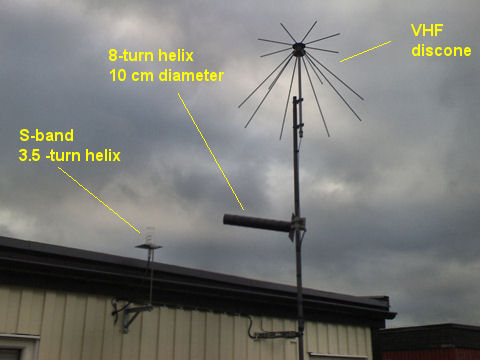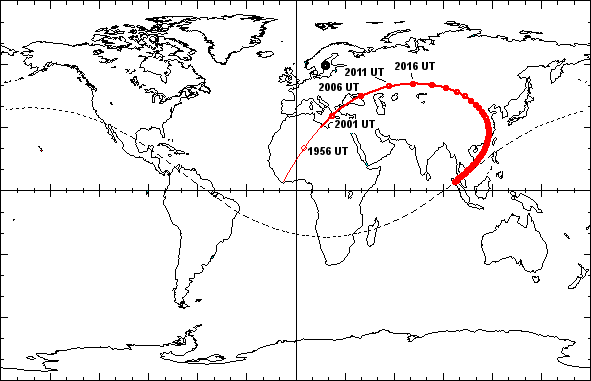
Sven Grahn
The Zenit launch vehicle for SeaLaunch and LandLaunch use different frequencies, especially in the last stage, the Block DM. The table below shows the differences.
| Location | SeaLaunch | LandLaunch |
| Second stage |
211.3 MHz (Sirius) |
231.3 MHz (Sirius) |
| Block DM, Payload unit | 166.0 MHZ (BR9DM) 922.76 MHz (Kvant) 2272.5 MHz |
1026.5 MHz (BITS) 1034.5 MHz |
The BITS telemetry system for the Block DM for LandLaunch uses 1.25 MHz bandwidth (at the -0.5 dB point) and 17 Watts output power.
The LandLaunch Zenit-3SLB launch vehicle carrying the Telstar-11N took off from Baikonur at 18:29:58.4 UT on February 26, 2009. The Block DM stage ignited 78 minutes after launch while in a parking orbit and entered a transfer orbit between 180-35431 km at 50.7o inclination. The upper stage coasted with the Telstar 11N satellite for a five-hour period and then ignited briefly for its third and final burn of this mission. Following another 10-minute coast, the spacecraft separated from the upper stage at 0025.41 UT on February 27. Shortly after spacecraft separation, the Gnangara ground station near Perth, Australia, acquired the first signals from the satellite in orbit.
The map below shows the motion of the Block DM during the transfer orbit. The radio horizon (dashed line) is shown for the apogee of the transfer orbit. (N.B. This map has been generated without using element sets from www.space-track.org )

The Block DM ignited a second time at 1948.22 UT and shut down 83 minutes 40 seconds after launch, i.e at 1953.40 UT. The Block DM rose above the horizon in Stockholm 2000.00 UT at a range of 3332 km. It quickly rose in elevation and reached 34.6o at a range of 3990 km at 2008.30 UT whereafter it gradually set. The figure below shows the elevation as a function of time. (N.B. This graph has been generated without using element sets from www.space-track.org )
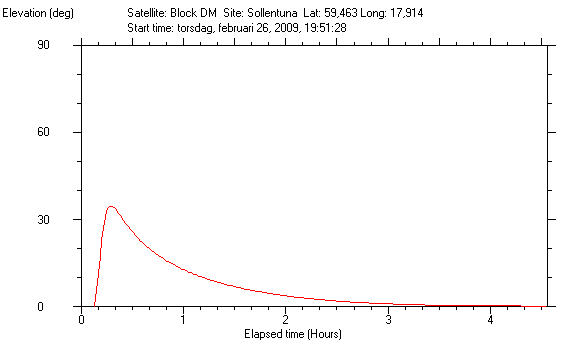
The signals from Block DM appeared at 2001.00 UT on 1026.5 MHz. When tuning to 1034.5 MHz an identical-looking signal was present. At this moment I had tuned the SDR-14 radio to the center frequencies. (In the spectrogram I have "flood-filled" with black to make the signals clearer).
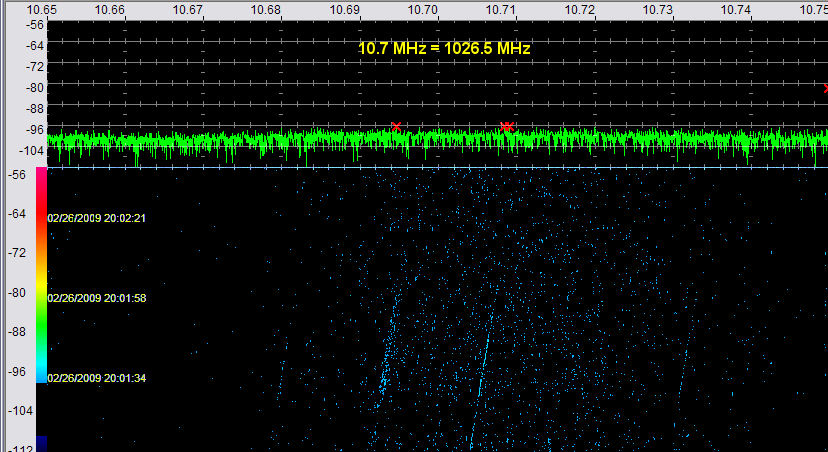
This signal faded out and I speculated that the spectral power density near the nominal carrier frequency may be low and that there may be more signals in sidebands. Therefore I widened the bandwidth to 500 kHz and then I could see two "carriers" 256 kHz apart. This is reminiscent of the signals observed fom ISS in the 630 MHz band and from Soyuz and Progress on 166 MHz. The signals looked identical on both frequencies.

Thereafter, I tuned one of the sidebands and remained there and slowed down the waterfall to one update (pixel) every 10 seconds. The shift to slow scan took place at 2009.30 UT. The carrier-to-noise ratio varied between 8 dB up to 15 dB. The figure below shows how the doppler shift culminated almost at the time when the signal faded out at 2017 UT at an elevation of 28o and a range of 7400 km.
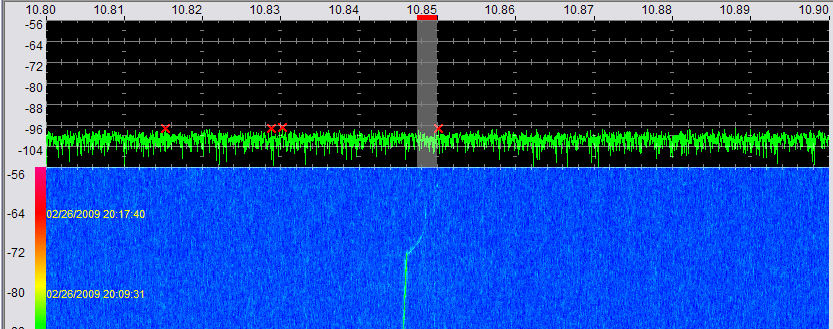
So, it seems it is possible to monitor LandLaunch launches from Baikonur, but not for such long durations as for the Briz-M.
I used my old 8-turn helix antenna pointing at low elevation to the southeast. I have used this antenna since the 1970's to track Soyuz and Progress craft. It has about 14 dB gain and 40o beamwidth (-3 dB). I use an SSB Electronic SLN-series for 1000 MHz which has a noise figure of about 0.3-0.5 dB noise figure. However, I keep the pre-amp indoors so the coax attenuation also contributes to the noise figure. I guess the attenuation could be 1.2 dB. So in the worst case the total noise figure could be 1.5-1.7 dB.
